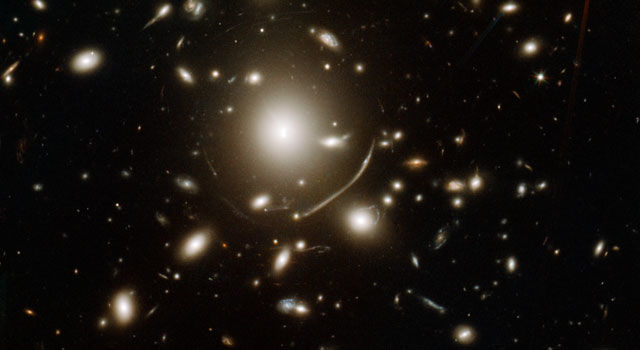Create a free profile to get unlimited access to exclusive videos, sweepstakes, and more!
Are there invisible cracks in spacetime left over from the birth of the universe?

It sounds like the intro to a science fiction B movie. Billions and billions of years ago, after the universe exploded into being and began to cool off from the fires of creation, cracks formed in the fabric of spacetime … hold the script for a second. This is supposed to have actually happened.
Cosmic cracks or “strings” are thought to be remnants of the Big Bang. These fissures are thought to have resulted from cooler bubbles of new universe spreading in different directions and not aligning perfectly when they ran into each other. There are physicists who believe cosmic strings can still be detected in the cosmic microwave background (CMB), or all the leftover heat from when the universe spawned, but there is too much noise in the way. Now a new study challenges how they should be looked for among all that noise.
Physicists Razvan Ciuca and Oscar F. Hernandez developed what they call “strategies for training [complex] neural networks [to detect cosmic strings] in the presence of noise,” as they said in the study, which is soon to be published. Unfortunately, even AI couldn't shed enough light on these mysterious objects in space — so the physicists believe they have to level up.
While the concept of cosmic strings would probably be too difficult for even a genius filmmaker to bring to life onscreen, try to think of them this way. As the universe underwent a phase transition during which cooler bubbles emerged, they just kept spreading, and they spread to and from wherever. Say there were two sets of bubbles that started forming anywhere in the universe. They would have been heading toward each other at random. With no force to perfectly align them when they finally met, there would be almost zero chance they would join together flawlessly.
It is in those areas where they couldn’t make it work that cracks would have appeared. These cracks are believed to be slivers of energy from the universe's violent beginnings that couldn’t cool it as temperatures across rest of the universe went down.
“Searching for signatures of cosmic strings probes particle physics beyond the Standard Model in an energy range complementary to that probed by particle accelerators such as the Large Hadron Collider,” Ciuca and Hernandez said.
Finding evidence of cosmic strings would shake the Standard Model of physics, which includes atoms and subatomic particles and is currently the most advanced theory of particle physics we have. That’s saying a lot for a model that is still incomplete. There are all sorts of loopholes in the Standard Model that can allow for cosmic strings, but theory aside, Ciuca and Hernandez found that getting together enough CMB data for even a neural network to detect them was nearly impossible.
That doesn't mean they will never be unearthed. The physicists believe that the newest method of seeking out cosmic strings, which is based on how fast hydrogen atoms everywhere in space are moving away from Earth, could possibly succeed.
“We will need to go beyond CMB measurements, perhaps to the future promise of the information rich 21cm intensity maps,” they predicted.
Called 21cm intensity mapping because hydrogen emits electromagnetic energy with a 21-centimeter wavelength, this method could be the one that proves cosmic strings exist. There are no observatories that can handle that — yet — but they are in progress. What they find may really end up sounding like it crawled out of sci-fi.
(via LiveScience/arXiv.org)


























